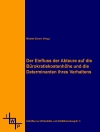In ‘Human Intercourse, ‘ Philip Gilbert Hamerton employs a rich, reflective prose style reminiscent of Victorian literature to explore the intricate social dynamics of human relationships. Through a series of perceptive essays, Hamerton delves into the psychological and philosophical underpinnings of interpersonal connections, offering a nuanced examination of societal norms and individual behavior. The book’s contextual backdrop is rooted in the late 19th century, a time when social relations were undergoing significant transformation, making Hamerton’s insights particularly relevant in dissecting the balance between individual autonomy and communal responsibility. Hamerton was not only an accomplished writer and artist but also a keen observer of human nature. His experiences in both the literary and artistic realms informed his understanding of the complexities of human interaction. A passionate advocate for the integration of art and social commentary, Hamerton’s wealth of knowledge and diverse experiences provided him not only with the tools to analyze but also the desire to improve societal relations, which is palpably felt in this work. Readers seeking a profound exploration of what it means to connect with others will find ‘Human Intercourse’ both enlightening and intellectually stimulating. Hamerton’s eloquent observations and keen insights into the human condition make this book a timeless resource for anyone interested in the intricate web of social interaction.
Despre autor
Philip Gilbert Hamerton (1834-1894) was an English essayist, art critic, and writer, profoundly remembered for his insightful contributions to the discourse on aesthetics and social interactions among his contemporaries. Born on September 10, in the urban confluence of Lancashire, Philip displayed early inclinations towards the arts and literature. His diverse literary pursuits produced works that spanned genres from art criticism to fiction, with ‘Human Intercourse’ (1884) being a noteworthy examination into the subtleties and complexities of social relationships and communication. This reflective and philosophical work highlights Hamerton’s penchant for introspective prose, delving into themes of empathy, etiquette, and the social fabric that binds human experience. His literary style often characterizes the Victorian blending of the moralistic with the ornate, which can be observed in his travel writings, art critiques, and essays. Hamerton’s ‘The Intellectual Life’ (1873) and ‘Thoughts About Art’ (1873) exemplify his dedication to discussing the role of art and intellect in personal development and society. His extensive travels across Europe fortified his transnational perspective, fostering a unique narrative voice that attracted an international readership. His work, interwoven with earnestness and erudition, continues to draw the notice of scholars for its historical significance and literary craftsmanship. Although his name might not resonate as loudly as some of his contemporaries, his writings remain a testament to the richness of Victorian literature and thought.












